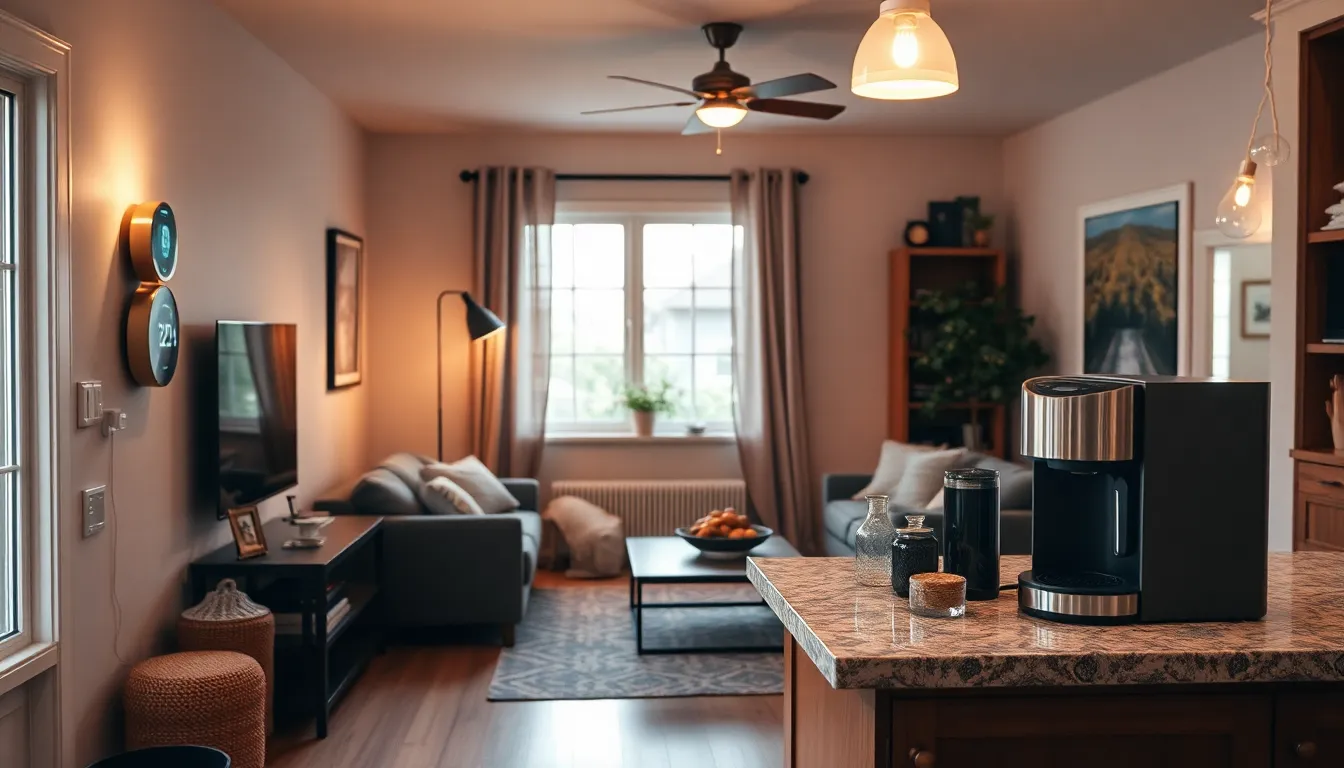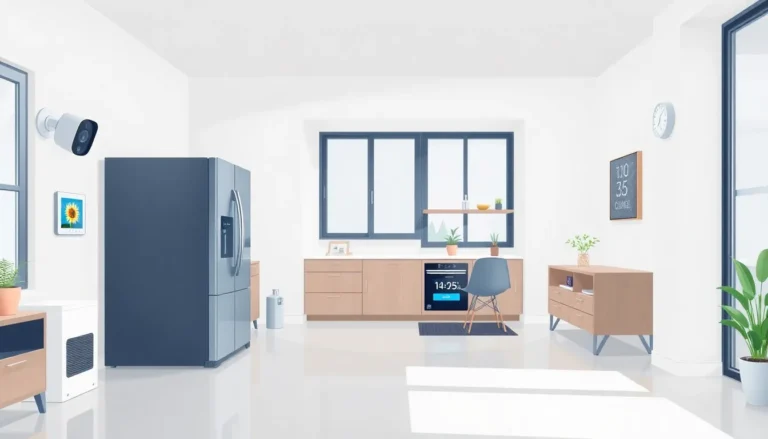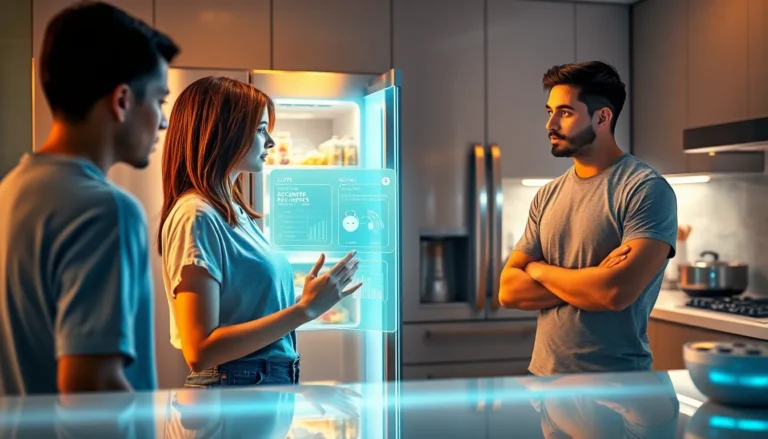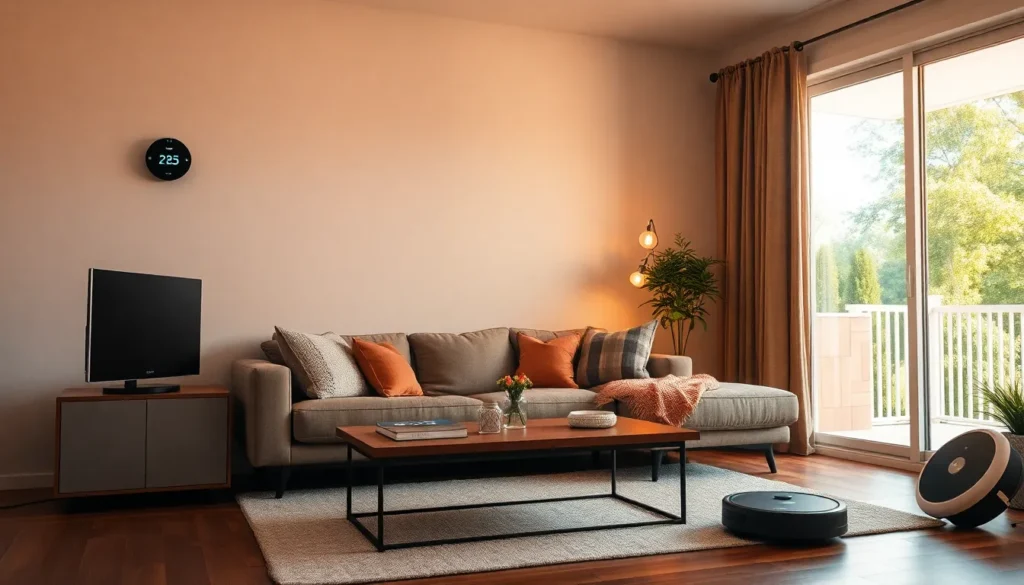Table of Contents
ToggleImagine a home that knows you better than your best friend—where your coffee brews itself as you stumble out of bed and the lights dim to set the perfect mood for movie night. Welcome to the world of IoT devices, where your humble abode transforms into a smart sanctuary. These gadgets don’t just make life easier; they practically anticipate your every need, like a loyal butler who never asks for a raise.
Overview of IoT Devices for Home
IoT devices revolutionize daily living by integrating technology into familiar routines. Smart thermostats adjust temperatures based on user behavior, providing energy efficiency. Home security cameras enhance peace of mind, allowing homeowners to monitor their properties remotely. Smart lighting systems offer customizable ambiance, enabling adjustments through simple voice commands or smartphone apps.
Thermostats like the Nest Learning Thermostat optimize heating and cooling, learning preferences over time. Smart speakers, such as Amazon Echo and Google Home, serve as central hubs for controlling various devices, bridging communication between multiple products. Robots designed for cleaning, like the Roomba, autonomously navigate spaces, ensuring clean floors without manual effort.
Home appliances increasingly feature connectivity, with products such as smart refrigerators tracking inventory and suggesting recipes based on available ingredients. Smart locks provide secure entry methods through keyless technology, allowing users to grant access to guests remotely. In addition, energy monitors help users track consumption and identify savings opportunities, creating a more sustainable home.
Alongside these devices, health-related gadgets like smart air quality monitors detect pollutants, contributing to a healthier indoor environment. As more homes adopt these innovations, the collective functionality grows, enhancing convenience, security, and efficiency. Users experience seamless integration, placing them in control of their living spaces, aligning with today’s fast-paced lifestyle. By embracing IoT technology, homeowners simplify and enrich their everyday experiences.
Benefits of IoT Devices for Home

IoT devices offer significant advantages for homeowners, making daily routines easier and safer. These benefits encompass improved convenience and enhanced security.
Improved Convenience
Smart technologies streamline household tasks. Automated devices reduce manual effort, with gadgets like smart thermostats adjusting temperatures based on user preferences. Smart lighting systems create the perfect ambiance, enabling adjustments through voice commands or mobile apps. Furthermore, automated coffee makers start brewing at desired times, ensuring your morning routine is efficient. Mobile control of appliances allows users to adjust settings remotely, such as preheating the oven or turning off forgotten lights. The integration of these devices fosters a seamless living experience, promoting a lifestyle that saves time and energy for essential activities.
Enhanced Security
Home security experiences a significant upgrade with IoT devices. Surveillance cameras provide real-time video feeds accessible from smartphones, allowing monitoring from anywhere. Smart locks enable secure, keyless entry, granting homeowners control over who enters their property. Notifications alert users to unusual activity, enhancing safety. Integrating doorbell cameras with motion detection offers an additional layer by capturing visitors and deliveries. Additionally, security systems automatically notify law enforcement in case of emergencies. Collectively, these features create a comprehensive security framework that enhances the safety of a home and its occupants.
Popular IoT Devices for Home
IoT devices enhance everyday living by providing convenience and control. Homeowners increasingly rely on these gadgets to optimize their lifestyles.
Smart Speakers
Smart speakers act as central hubs for managing various connected devices. They respond to voice commands, making it simple to play music or control lighting. Devices like Amazon Echo and Google Nest assist with tasks, offering reminders and integrating with smart home ecosystems. Developers continuously enhance their capabilities, allowing for more seamless interactions. Smart speakers also enable homeowners to access information effortlessly, turning homes into interactive environments.
Smart Thermostats
Smart thermostats, such as the Nest Learning Thermostat, adapt to user preferences over time. Utilizing geofencing, they adjust heating and cooling based on occupancy. Homeowners can program these devices remotely via smartphone apps, resulting in energy savings. Advanced models track energy consumption and provide insights into usage patterns, making homes more efficient. They contribute to reducing energy bills while ensuring comfort throughout different seasons.
Security Cameras
Security cameras deliver peace of mind by offering real-time monitoring from anywhere. Users can access live feeds through mobile apps, enhancing home security. Products like Ring and Arlo feature motion detection, sending alerts when unusual activity occurs. This surveillance capability enables immediate responses to potential threats. Integrating with smart doorbells expands the security framework, creating a comprehensive monitoring system.
Considerations When Choosing IoT Devices for Home
Selecting the right IoT devices involves several key factors that enhance the smart home experience. Compatibility with existing systems and devices stands out as a primary consideration.
Compatibility and Interoperability
Devices must communicate seamlessly within a smart home ecosystem. Users often benefit from platforms that support various brands and protocols, like Zigbee and Z-Wave. Evaluating compatibility ensures smooth integration, preventing issues where devices fail to interact. Compatibility fosters flexibility, allowing homeowners to choose from a broader range of options. Many IoT devices also feature app integrations, making management more accessible. Searching for devices that specifically mention interoperability with smart hubs can result in a more cohesive smart home setup.
Security and Privacy Concerns
Security matters when integrating IoT devices into daily living. Many users express concerns about unauthorized access and data breaches. Selecting devices with robust encryption protocols protects sensitive information. Understanding that manufacturers must comply with regulations helps in identifying trustworthy brands. Regular software updates play a critical role in maintaining security. Reading privacy policies reveals how user data is collected and managed. Ensuring devices feature secure connections, such as WPA3 for Wi-Fi, enhances protection as well. Prioritizing security and privacy contributes to a safer, smarter living environment.
Embracing IoT devices in the home can significantly enhance daily living. These smart technologies not only offer unparalleled convenience but also elevate security and energy efficiency. Homeowners can enjoy the benefits of automation and remote control, streamlining their routines and creating a more comfortable living environment.
As the landscape of smart home technology continues to evolve, the integration of various IoT devices will only grow more sophisticated. By selecting compatible and secure devices, individuals can ensure a seamless experience that aligns with their lifestyle. Investing in IoT solutions paves the way for a more efficient and enjoyable home, making everyday tasks easier and enhancing overall quality of life.







